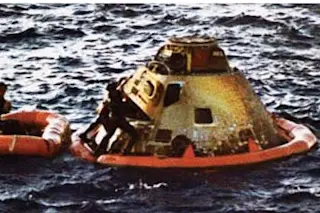1 Yuri Gagarin, the first man in space, died when he crashed his MIG-15 on a training mission. An outdated weather report failed to warn of low clouds.
2 Up to 200 people died when an R-16 rocket exploded at the Baikonur Space Center on October 24, 1960. It was kept secret until the Soviet Union collapsed.
3 On a lighter note, at least he wasn't blown up: Slated to follow Gagarin into space, G. G. Nelyubov got into a drunken fight with an army patrol, refused to apologize, and was demoted and airbrushed out of the official cosmonaut team photo.
4 Five years later he committed suicide.
5 In 1967 Vladimir M. Komarov became the first person to die on a space mission when parachutes on his Soyuz 1 capsule failed to open during descent.
6 The three crew members of Soyuz 11 suffocated on June 30, 1971, due ...














